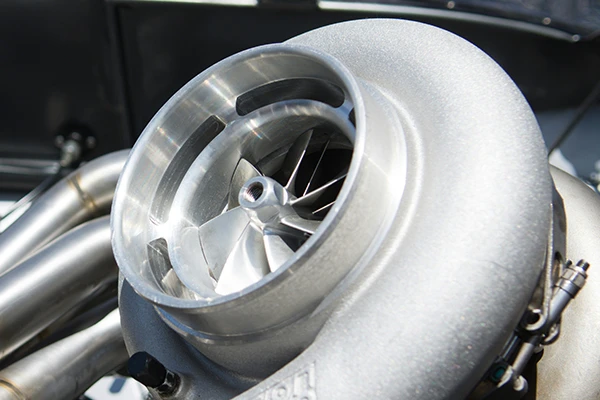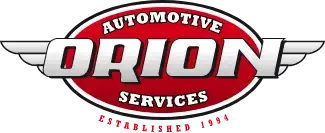What is a Twin Scroll Turbocharger?
In the last few decades, turbochargers have developed from a purely performance-focused technology to one of the most popular and beneficial parts of modern vehicles from sports cars to grocery getters.
A large part of this transformation came from the benefits of the twin-scroll turbocharger design, as it mitigated many of the drawbacks that manufacturers feared about using turbochargers in place of a larger displacement motor. In this article, we’ll go over why the twin-scroll came about, the game-changing benefits it brought to the table, and how they work differently from a traditional turbo.
Since the Chevrolet Corvair Monza brought turbochargers to the automotive market in 1962, forced induction (but specifically turbocharging) has carved itself a place as one of the most effective ways of adding power and efficiency to smaller displacement motors.
However, turbos have long faced minimal adoption in economy and family vehicles. When the Corvair Monza was released, it immediately set turbocharger popularity back years with its infamous unreliability. By the end of its lifecycle, GM was offering free naturally aspirated engine replacements as they feared a PR meltdown from the failed “gimmick” turbocharging technology.
In the 1970s, turbochargers got the chance they needed to prove their usefulness and practicality in more than just race cars and specialty performance vehicles. The oil crisis and subsequent gas shortage made the prospect of a smaller-engined and fuel-efficient vehicle much more attractive than the gas-guzzling land yachts that were so popular in the North American market prior.
Manufacturers took notice of this and felt it was worth investing in turbocharger research and development to keep up with consumer priorities. While turbochargers started to hit the mainstream during this period, they also started to show some of the flaws that had prompted the hesitation to develop them in the first place.
How do Turbochargers Work?
Traditional turbochargers work using the flow of exhaust gasses to spin a turbine, in turn spinning a compressor, creating pressurized air that is fed into the cylinders for combustion. With the increased air intake, the air/fuel mixture has more oxygen to use in combustion, which allows turbocharged engines to create more power than a naturally aspirated engine of the same size.

Replacing Displacement: The Downsides
One of the larger drawbacks of turbochargers is the delay in power delivery as the turbo’s turbine takes time to spool up while accelerating, colloquially known as turbo lag.
This lag causes a hesitating feeling when accelerating and makes the power delivery inconsistent. Turbo lag is a product of how turbochargers operate since they use exhaust gasses from the cylinders to spin the turbine needed to create boost pressure. This turbine takes time to spin up to the proper speed, leaving the vehicle without its full power for a split second.
Traditional turbo designs have yet another issue that prevents continuous power delivery. Since turbo impellers rely on exhaust gas pulses for momentum, they only receive power on the exhaust stroke of each cylinder in the motor. This means that power delivery is heavily influenced by the firing order of the engine as well as the current engine RPM.
Adding onto this is the fact that, due to the staggered firing order of the engine, each time an exhaust valve is opened for one cylinder the intake valve is open for another. This can cause significant pressure changes between the exhaust gasses of varying cylinders, which leads to inconsistent delivery of exhaust to the turbocharger impeller.
In cases where the turbine slows considerably, it can lead to a buildup of backpressure within your exhaust manifold. In rare instances, this can lead to “reversion”, where exhaust gasses are forced back into the cylinders due to excess back pressure. Reversion has the potential to cause significant damage to your engine, so manufacturers mitigate this risk by using aggressive valve timing, which dampens power.
Twin-Turbocharging: Useful But Impractical
Problems with your turbocharger? Add another!
Well, it’s not exactly that easy, but manufacturers tried a few creative turbo setups to solve these issues.
Parallel twin-turbocharging consists of splitting the exhaust gasses between two turbochargers at the same time. This reduces the amount of time the valves need to stay open, which prevents pressure interference. Because of the smaller turbo sizes in a parallel twin-turbo setup, this arrangement also reduces turbo lag.
Sequential turbocharger arrangements were also used to mitigate turbo lag, by using one turbo for low RPM applications and another behind that entirely for high RPM. While this gets rid of nearly all turbo lag, it also poses some of its own issues.
So, while twin-turbocharging showed great promise in specialty performance vehicles like the Mazda RX-7 and Toyota Supra, doubling the number of moving parts and failure points in an already unreliable technology may not have been the most practical idea.
Twin-turbo setups bring great performance benefits to the table, but the inherent unreliability made them unrealistic for the vast majority of vehicles on the market.
What is a Twin-Scroll Turbocharger?
Could you have a turbocharger setup that brings many of the benefits of a twin-turbo setup without the extra components and size? That’s the promise of twin-scroll turbos.
Instead of splitting the exhaust gasses between two turbochargers, twin-scroll turbos split the exhaust gasses between two channels leading to the same turbine. These channels, called “scrolls,” allow for exhaust pulses to be separated and timed to minimize interference.
Without the threat of reversion, engines with twin-scroll turbos can run longer ignition delay. This lowers cylinder temperature and causes a leaner fuel mixture, leading to increased fuel efficiency.
This smaller scroll size combined with the more consistent delivery of exhaust flow means turbo lag can be reduced significantly in twin-scroll setups.
As advancements have been made in computer-aided design and manufacturing processes, twin-scroll turbos have made their way into various vehicles. From performance-focused applications like the BMW M5 to grocery-getters like the Subaru Ascent, twin-scroll designs will continue to grow in usage among manufacturers.
Forced Induction Maintenance & Repair in Ann Arbor
If your vehicle’s turbocharger requires attention, trust the experienced technicians at Orion Automotive Services in Ann Arbor, Michigan! Our team has extensive training and expertise in forced induction systems and can help return yours to the proper condition. Give us a call or schedule online today!

